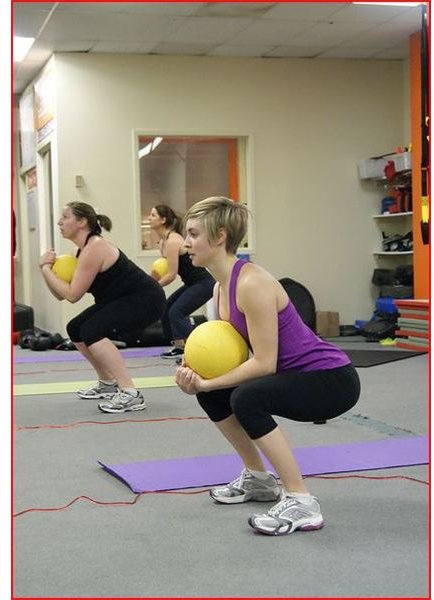Circuit Training Routines: Planning the Regimen That Suits You Best
Higher Intensity, Lower Time Frames
Circuit training routines are intense all-in-one workouts designed to improve mobility, strength and stamina by combining cardio and strength (resistance) exercises. The result of this type of conditioning, when practiced consistently, is better heart-health, stronger muscles and the loss of body fat.
In terms of physical fitness, circuit training essentially kills two birds with one stone, therefore reducing the amount of time spent working out. However, that shorter time frame translates to exercises that push your boundaries, raise your heart rate and challenge your muscles almost to failure, depending on the program you choose.
For instance, take a look at the benefits and instructions for using an Elliptical machine for interval training if you’re planning on incorporating that machine into one of your circuits.
Image credit/Flickr.com/hogganhealth
Pre-Plan: How In Shape Are You?
When choosing the routine that will work best for you, it’s vital to “know thyself’ as the ancient gadfly, Socrates, advocated. You can find routines for beginners, intermediates and advanced athletes, so determine which category fits you besat. As always, consult your physician before starting any new exercise program to determine if it’s safe for you to do so.
Next, determine which muscle groups you want to target. It’s a good idea to keep a total body approach for optimum conditioning. Some people like to target specific areas, such as belly fat, hips, waist or thighs.
Make a Plan, Stick to It, and Remain Flexible

The constant shifting through the muscle groups in a circuit allows you to do many repetitions with no need to rest in between them. Whatever routine you choose, remember two important factors.
- Write your plan down or use these convenient templates for workout routines, which can be amended and modified as you develop into a stronger, fitter version of yourself. Putting your plan in writing will help you to be more committed to your fitness goals.
- Experiment a little to find exercises you like, especially when it comes to cardio. If you’re doing routines you hate, it could negatively impact your motivation to the point where you do nothing at all.
Image credit/flickr.com/no_iron_fitness
Circuit Specifics: Exercises and Time Spent Doing Them
Decide which specific exercises you want to do as part of your circuit training routines. Typically, a circuit of five strength exercises and five cardio exercises over the course of a half hour works for the beginners.
As you become better conditioned over the weeks and months, you can do more circuits, doubling and tripling the intensity. If it’s a specific regimen you’re seeking, you’ll find outstanding options to do at home or at the gym by reading Circuit Training: Beat Workout Boredom on a Budget. There, you’ll find planning aides including specific exercises from squats to Pilates bicycles, coupled with the number of reps and times spent on each portion of your circuit.
Circuit training offers a wide variety of options since there are a bevy of resistance training exercises and a ton of different ways to get your cardio done. Switch up the routines from time to time to keep yourself motivated and committed.
You’ll push yourself to the brink in circuit training with exertion levels that keep your heart rate up. More advanced exercisers might prefer high-impact circuit training routines as described in Triathlon Strength Training.
References
Sports Fitness Advisor: https://www.sport-fitness-advisor.com/circuittraining.html
https://www.webmd.com/fitness-exercise/guide/take-shortcut-fitness-circuit-training
